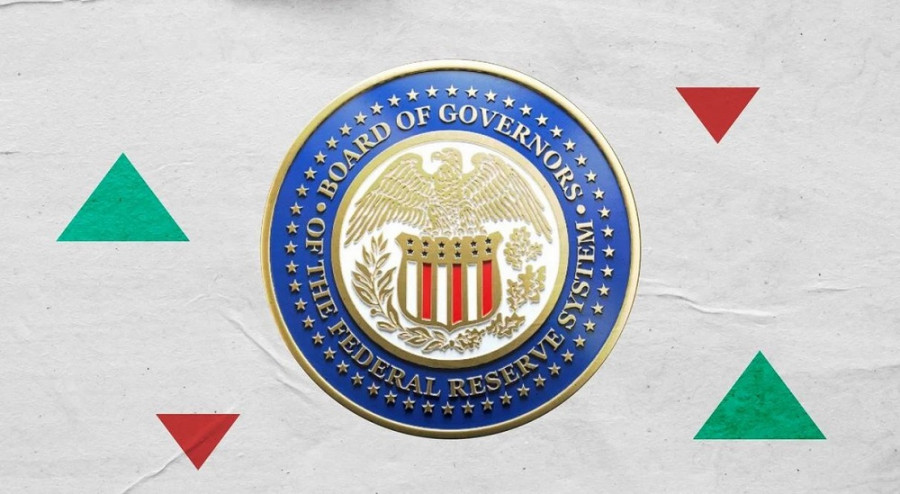
The minutes of the November meeting of the Federal Reserve provided support for the American currency, allowing the bears of EUR/USD to organize a corrective movement towards the base of the 9th figure. On the whole, the document did not reveal anything new or sensational, but the tone of the minutes reminded dollar bulls that the majority of Federal Reserve members are ready to keep the interest rate at the current level for an extended period and, if necessary, resort to additional increases. The idea, as they say, is not new, but it has its effect.

It is worth noting that traders of dollar pairs (including EUR/USD) faced real emotional swings in November. At the beginning of the month, several representatives of the Federal Reserve, including Chairman Jerome Powell, noticeably tightened their rhetoric. The essence of their statements boiled down to the fact that the current interest rate level may "not be working," so the Federal Reserve may raise it again at one of the upcoming meetings. Such hawkish rhetoric provided substantial support for the greenback—for example, in the EUR/USD pair, the dollar strengthened to the level of 1.0660. However, inflation reports were later published, refuting the hawks' assumptions that the rate "is not working." Key inflation indicators declined more than forecast, reflecting a slowdown in inflation in the United States.
The question of a rate hike disappeared on its own: the probability of additional tightening of monetary policy at the December meeting is now only 5%, and at the January meeting—4%. Such a sharp change in sentiments significantly hit the greenback. EUR/USD buyers took advantage of the moment and tested the resistance level at 1.0960 (upper line of the Bollinger Bands indicator on the daily chart). However, they failed to consolidate above this target to approach the main price barrier at 1.1000. As a result, sellers regained the initiative, using the formal reason—the hawkish minutes of the Federal Reserve.
But can we talk about a trend reversal in the current circumstances? It may be too early to make such conclusions. After a sharp price surge, a corrective decline usually follows, so the current price dynamics are nothing more than a correction.
There are several points we can note from the minutes of the November Federal Reserve meeting. The main point is that this meeting took place before the publication of inflation growth data in October. Therefore, the hawkish theses of the document should be considered in light of this factor—it is a look from the past without taking into account changed circumstances.
Apparently, the dollar bulls paid attention to the key phrase in the minutes—that further tightening of the monetary policy could be appropriate "if progress toward the goal is insufficient." At the same time, members of the regulator pointed out the increasing risks of inflation. In their opinion, progress in combating disinflation will halt, or inflation will pick up again "due to the sustained momentum of economic activity."
It is worth noting that the U.S. economy grew by 4.9% YoY (with a forecasted growth of 4.3%) in the third quarter—the highest growth rate since Q4 2021. Powell, in one of his recent speeches, also expressed concern that unexpectedly strong GDP growth in the U.S. could impact inflation dynamics. He noted that the American economy turned out to be "surprisingly strong," and if additional evidence of high economic growth rates appears in the future, the regulator may need another interest rate hike.
Although the other theses of the minutes were quite cautious (the regulator did not announce further tightening of monetary policy but also did not rule out such a development), EUR/USD traders focused their attention on the fact that the majority of Federal Reserve members continue to express concern about inflationary risks.
Here, it is important to emphasize again that the November meeting took place before the publication of October inflation data. Therefore, projecting the rhetoric of the protocol onto the prospects of further monetary policy tightening is incorrect. It is also worth noting that Federal Reserve representatives have recently (after the release of inflation data) voiced a "moderately hawkish" position, stating only their readiness to keep the rate for an extended period (without mentioning additional tightening).
In other words, EUR/USD traders needed a reason for correction—and they got it in the form of the Federal Reserve minutes. No more, no less. It is not possible to speak of any trend reversal or an increase in hawkish expectations because, according to the CME FedWatch Tool data, the market still believes that the Federal Reserve will maintain a wait-and-see position both next month and at the beginning of next year.
Thus, selling the EUR/USD pair looks risky despite the downward price dynamics. The pair is still between the middle and upper lines of the Bollinger Bands indicator, as well as above all the lines of the Ichimoku, which demonstrates a bullish "Parade of Lines" signal. As the corrective impulse fades, it is advisable to consider long positions with the initial and, for now, the main target at 1.0960, which corresponds to the upper line of the Bollinger Bands indicator on the D1 timeframe.